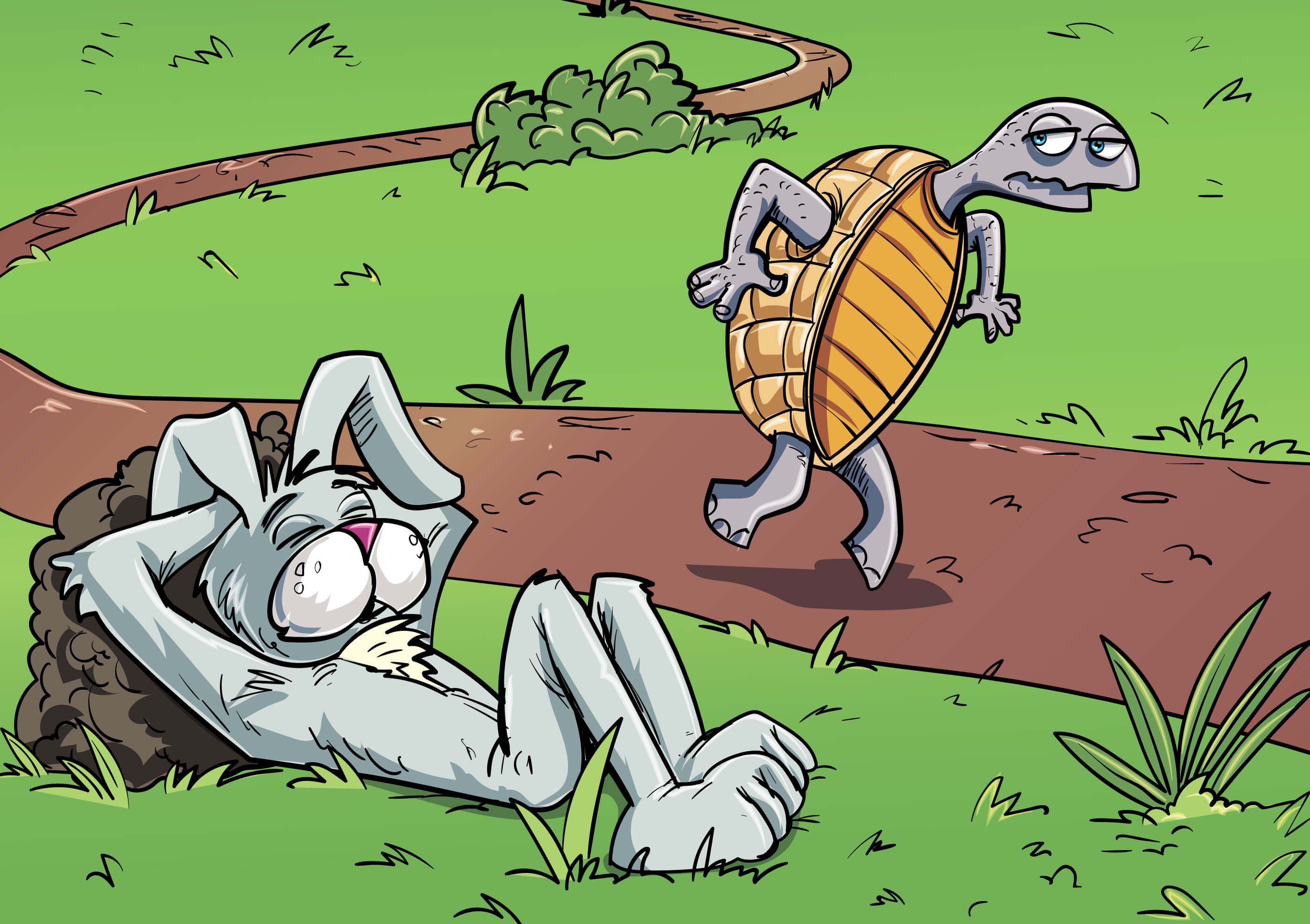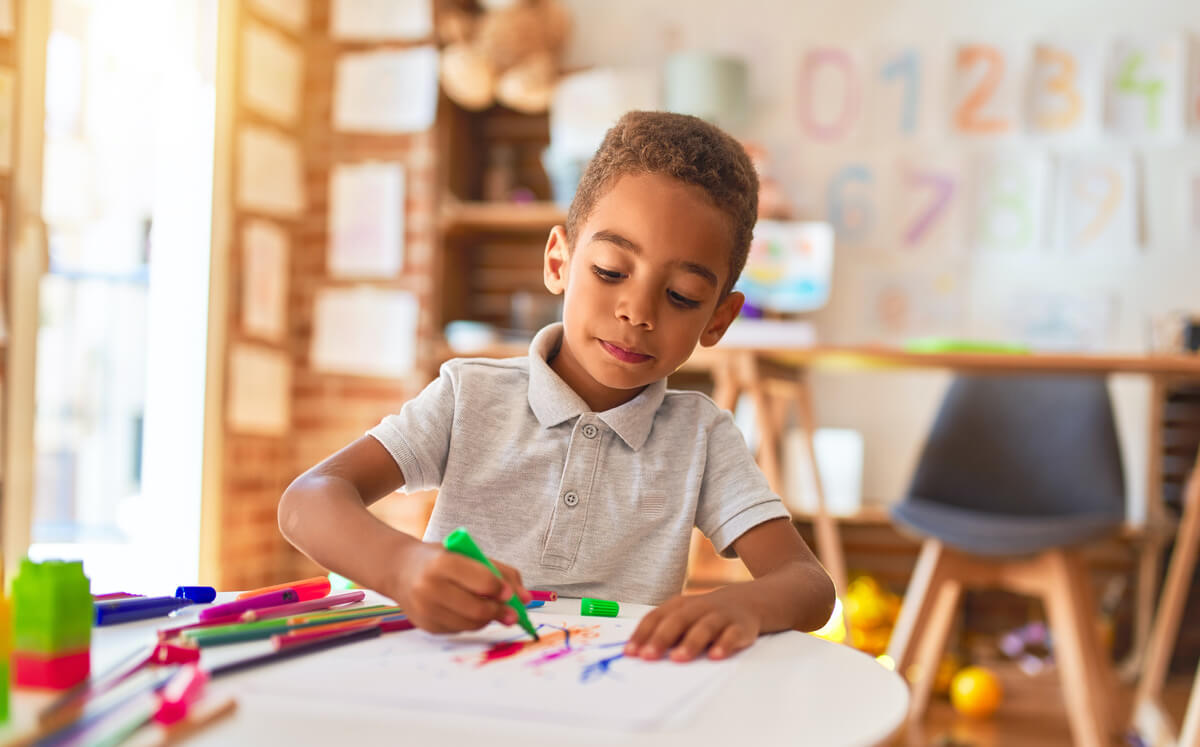6 Games and Activities to Teach Children to Be More Patient

In these times of immediacy and haste, games and activities to teach children to be more patient are great tools to carry out in their day-to-day routines. This helps to instill in them more calm and tranquility, which allows them to achieve well-being.
According to the Royal Spanish Academy (RAE), patience is defined as follows:
“The faculty of knowing how to wait when something is very much desired”.
We know that it’s difficult for children to manage waiting times and remain calm when their needs can’t be met immediately. That’s why today we bring you a few ideas to exercise your children’s patience in a simple and effective way. You’ll see how quickly they replace anxiety with calm!
Learning to wait: Games and activities to teach children to be more patient
The best advice we can give you is to “have patience to teach patience!” Remember that, as adults, we must set an example of behavior for children to see that it’s possible to put this beautiful virtue into practice.

1. Stories of animals with patience
Children love stories and animals, so take advantage of these two resources to explain to them that in nature, there are many species that need to work with patience in order to survive. Here are some concrete examples:
- Spiders patiently spin their webs in order to catch insects and feed.
- Snails shut themselves up in their shells when the air conditions aren’t suitable and wait patiently there until the environment becomes more humid.
- Bears hibernate for long periods of time to survive the cold temperatures and if they didn’t have the patience to do so, they would freeze to death.
- Ants take a very long time to build their nests, as they must patiently walk the trails for hours to carry the leaves and sticks needed to build their little house.
2. Puzzles: A traditional game to teach patience
Putting together puzzles (or jigsaw puzzles) is a very effective game for children to learn to be more patient.
There are puzzles for all ages, varying in complexity according to the number of pieces and the type of figures. In general, you can use them with children from 3 years old to adolescence.
In addition to encouraging patience in the little ones, this game teaches them to concentrate, work calmly, and plan to achieve their goals.
3. Origami: A craft that requires a lot of patience
The technique of folding paper to create figures is very old, but it’s always popular, fun, and simple to carry out.
Apart from learning to be patient and to concentrate, through this activity, children develop their fine motor skills and train hand skills.
4. Play Jenga as a family
If you want to have a super fun afternoon with the family, organize a game of Jenga with the kids!
This traditional game with wooden blocks requires a lot of concentration, a steady hand, and tons of patience.
5. Egg Races
A classic game you can do at home, it’s fun and great for kids to learn patience.
The process is simple:
- Set up a course with a start and finish line.
- Give a large spoon to each participant.
- Place a boiled egg on each spoon.
- The children must complete the course without the egg falling off the spoon.
- The winner is the one who arrives first with the unbroken egg in the utensil!
6. Drawing and painting
In general, any activity linked to art is effective in teaching patience to children. As they can take a pencil with their hands to draw and paint, little ones are able to concentrate in an unusual way on these tasks.
The hours they spend with their colors, their characters, mandalas, or drawings are a time of much learning. With drawing and painting, children develop patience, concentration, train their manual skills, and begin to appreciate the concept of beauty.

Benefits of activities to teach children to be more patient
Patience is learned, and according to Idelfonso Mendez, professor at the University of Murcia (Spain) and co-creator of the project Educar Para Ser (Educate to be), this virtue is part of the self-regulation skills that we must learn from childhood.
Self-regulation is a natural process related to the social sphere of the human being, which made it possible for coexistence in tribes to be orderly. Today, our way of life has changed and this ability in children has been lost because, having small families, they don’t need to wait for a turn to eat or to perform a task.
Therefore, teaching children to exercise patience translates into the following learning:
- The ability to wait
- Impulse control
- Acceptance of turns
- Planning and time management skills
- Tolerance of uncertainty
- Tolerance of frustration
- The development of sustained attention
- The notion of the effort involved in reaching a goal (they cultivate perseverance and develop resilience)
- The promotion of respect and responsibility as essential values for coexistence
Ultimately, these games and activities to teach children to be more patient have a positive impact on their interpersonal relationships, which translates into greater emotional balance and well-being.
Patience is the value of knowing how to wait. Teaching patience to children will help them to be happier and to enjoy not only an achievement, but the whole process that has to be done to get there.
In these times of immediacy and haste, games and activities to teach children to be more patient are great tools to carry out in their day-to-day routines. This helps to instill in them more calm and tranquility, which allows them to achieve well-being.
According to the Royal Spanish Academy (RAE), patience is defined as follows:
“The faculty of knowing how to wait when something is very much desired”.
We know that it’s difficult for children to manage waiting times and remain calm when their needs can’t be met immediately. That’s why today we bring you a few ideas to exercise your children’s patience in a simple and effective way. You’ll see how quickly they replace anxiety with calm!
Learning to wait: Games and activities to teach children to be more patient
The best advice we can give you is to “have patience to teach patience!” Remember that, as adults, we must set an example of behavior for children to see that it’s possible to put this beautiful virtue into practice.

1. Stories of animals with patience
Children love stories and animals, so take advantage of these two resources to explain to them that in nature, there are many species that need to work with patience in order to survive. Here are some concrete examples:
- Spiders patiently spin their webs in order to catch insects and feed.
- Snails shut themselves up in their shells when the air conditions aren’t suitable and wait patiently there until the environment becomes more humid.
- Bears hibernate for long periods of time to survive the cold temperatures and if they didn’t have the patience to do so, they would freeze to death.
- Ants take a very long time to build their nests, as they must patiently walk the trails for hours to carry the leaves and sticks needed to build their little house.
2. Puzzles: A traditional game to teach patience
Putting together puzzles (or jigsaw puzzles) is a very effective game for children to learn to be more patient.
There are puzzles for all ages, varying in complexity according to the number of pieces and the type of figures. In general, you can use them with children from 3 years old to adolescence.
In addition to encouraging patience in the little ones, this game teaches them to concentrate, work calmly, and plan to achieve their goals.
3. Origami: A craft that requires a lot of patience
The technique of folding paper to create figures is very old, but it’s always popular, fun, and simple to carry out.
Apart from learning to be patient and to concentrate, through this activity, children develop their fine motor skills and train hand skills.
4. Play Jenga as a family
If you want to have a super fun afternoon with the family, organize a game of Jenga with the kids!
This traditional game with wooden blocks requires a lot of concentration, a steady hand, and tons of patience.
5. Egg Races
A classic game you can do at home, it’s fun and great for kids to learn patience.
The process is simple:
- Set up a course with a start and finish line.
- Give a large spoon to each participant.
- Place a boiled egg on each spoon.
- The children must complete the course without the egg falling off the spoon.
- The winner is the one who arrives first with the unbroken egg in the utensil!
6. Drawing and painting
In general, any activity linked to art is effective in teaching patience to children. As they can take a pencil with their hands to draw and paint, little ones are able to concentrate in an unusual way on these tasks.
The hours they spend with their colors, their characters, mandalas, or drawings are a time of much learning. With drawing and painting, children develop patience, concentration, train their manual skills, and begin to appreciate the concept of beauty.

Benefits of activities to teach children to be more patient
Patience is learned, and according to Idelfonso Mendez, professor at the University of Murcia (Spain) and co-creator of the project Educar Para Ser (Educate to be), this virtue is part of the self-regulation skills that we must learn from childhood.
Self-regulation is a natural process related to the social sphere of the human being, which made it possible for coexistence in tribes to be orderly. Today, our way of life has changed and this ability in children has been lost because, having small families, they don’t need to wait for a turn to eat or to perform a task.
Therefore, teaching children to exercise patience translates into the following learning:
- The ability to wait
- Impulse control
- Acceptance of turns
- Planning and time management skills
- Tolerance of uncertainty
- Tolerance of frustration
- The development of sustained attention
- The notion of the effort involved in reaching a goal (they cultivate perseverance and develop resilience)
- The promotion of respect and responsibility as essential values for coexistence
Ultimately, these games and activities to teach children to be more patient have a positive impact on their interpersonal relationships, which translates into greater emotional balance and well-being.
Patience is the value of knowing how to wait. Teaching patience to children will help them to be happier and to enjoy not only an achievement, but the whole process that has to be done to get there.
All cited sources were thoroughly reviewed by our team to ensure their quality, reliability, currency, and validity. The bibliography of this article was considered reliable and of academic or scientific accuracy.
- Méndez, I. (2021) Educar en la paciencia y la incertidumbre hará que los niños tengan una madurez más feliz. The Conversation. Disponible en: https://theconversation.com/educar-en-la-paciencia-y-la-incertidumbre-hara-que-los-ninos-tengan-una-madurez-mas-feliz-162144
- Programa Educar para ser. Universidad de Murcia, España. Disponible en: https://www.educarparaser.org/
This text is provided for informational purposes only and does not replace consultation with a professional. If in doubt, consult your specialist.








